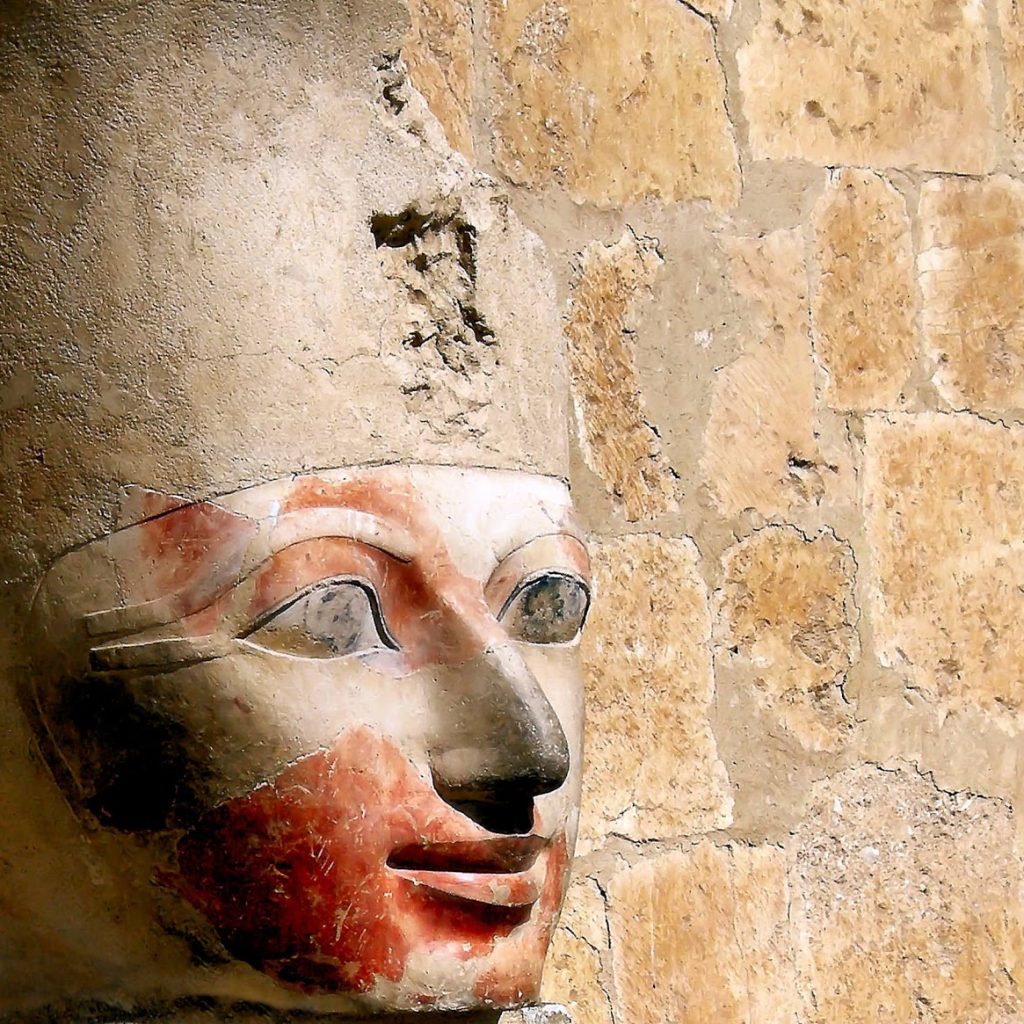
Unraveling the Legacy of Egypt’s Most Enigmatic Ruler Hatshepsut
Hatshepsut, an enigmatic figure of ancient Egypt, emerges as a towering presence in history. Her journey from obscurity to the throne defied societal norms, challenging expectations and paving the way for her unprecedented reign as one of Egypt’s rare female pharaohs. With a controversial ascent to power, rule becomes a captivating narrative, rich in ambition, intrigue, and lasting impact.
Breaking through the veils of tradition, Hatshepsut’s reign resonates with boldness and determination. Her remarkable achievements spanned diverse domains, from diplomacy to architecture and trade, leaving an indelible mark on Egypt’s history. Despite the controversies surrounding her rise, her legacy endures as a testament to her enduring influence and visionary leadership.
In the annals of ancient Egypt, Hatshepsut’s story stands out as a testament to the triumph of ambition over convention. Her reign serves as a beacon of inspiration, challenging perceptions and redefining possibilities for generations to come. Through her audacity and perseverance, Hatshepsut carved a path to greatness, leaving behind a legacy that continues to intrigue and captivate the imagination of scholars and enthusiasts alike.
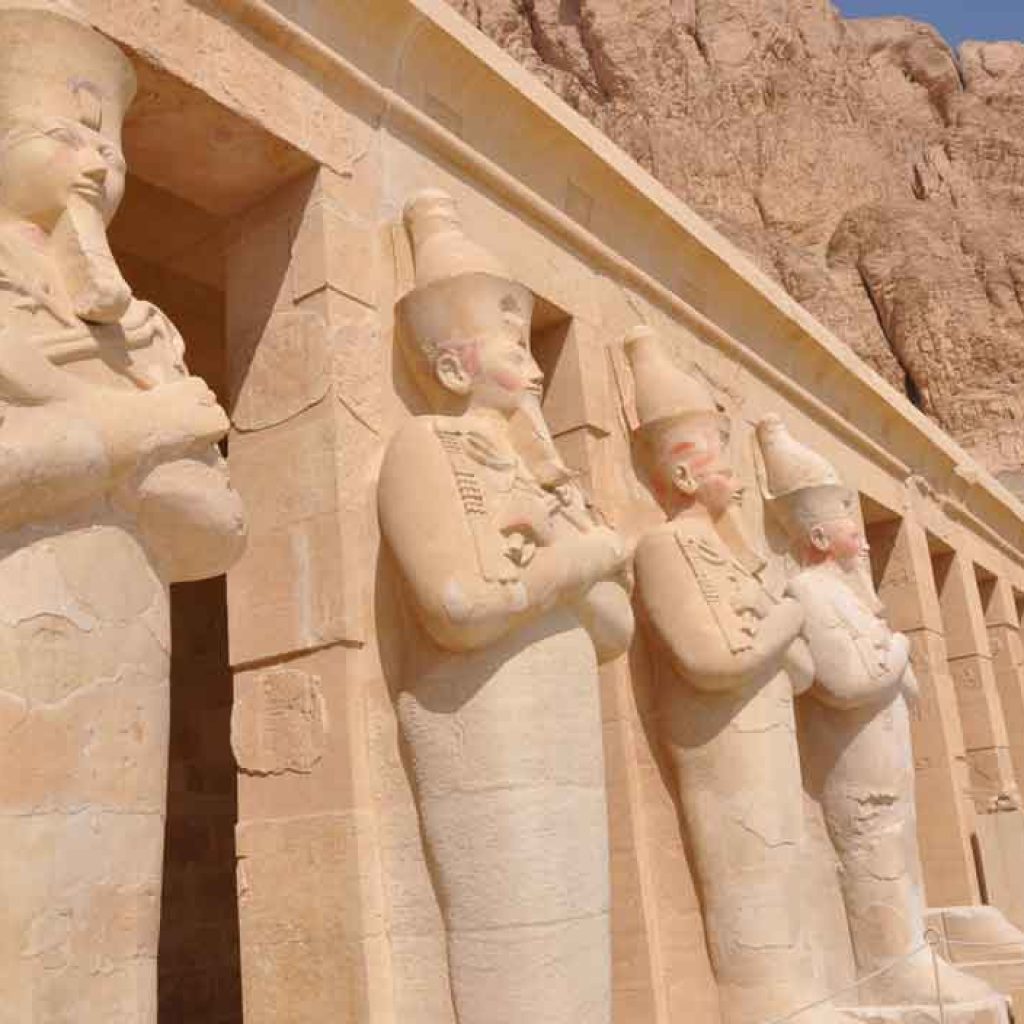
Within this segment, we have the opportunity to delve deeper into Hatshepsut’s formative years entrenched within the royal court. Here, we aim to uncover the intricacies of her upbringing, her educational pursuits, and the intricate power dynamics prevalent during the era of the Eighteenth Dynasty.
Through a nuanced exploration of her connections with pivotal figures like her father, Pharaoh Thutmose I, and her spouse who was also her brother, Thutmose II, we aim to illuminate the complex tapestry of political maneuvering and familial bonds that propelled her towards authority.
Hatshepsut’s early life serves as a pivotal backdrop, shaping the trajectory of her future reign. Born into the esteemed lineage of the Eighteenth Dynasty, her upbringing was steeped in the traditions and expectations of royalty. From her earliest years, she was immersed in the customs and rituals of the court, preparing her for the weighty responsibilities that lay ahead.
Central to Hatshepsut’s development were her relationships with key figures within the royal hierarchy. Her father, Pharaoh Thutmose I, wielded immense influence over her formative years, instilling in her a sense of duty and ambition. Likewise, her marriage to her brother, Thutmose II, solidified her position within the royal family, cementing alliances and securing her place in the line of succession.
Yet, beneath the veneer of familial unity lay a complex web of political intrigue and power struggles. As Hatshepsut navigated the corridors of power, she encountered rival factions vying for supremacy within the court. Her ability to navigate these treacherous waters, forging alliances and outmaneuvering her adversaries, would ultimately prove instrumental in her ascent to the throne.
By peeling back the layers of Hatshepsut’s early life, we gain insight into the formative experiences and relationships that shaped her journey to power. Through a nuanced exploration of her upbringing, education, and familial connections, we uncover the seeds of ambition and resilience that would define her reign as one of ancient Egypt’s most formidable rulers.
2: The Coronation of a Pharaoh
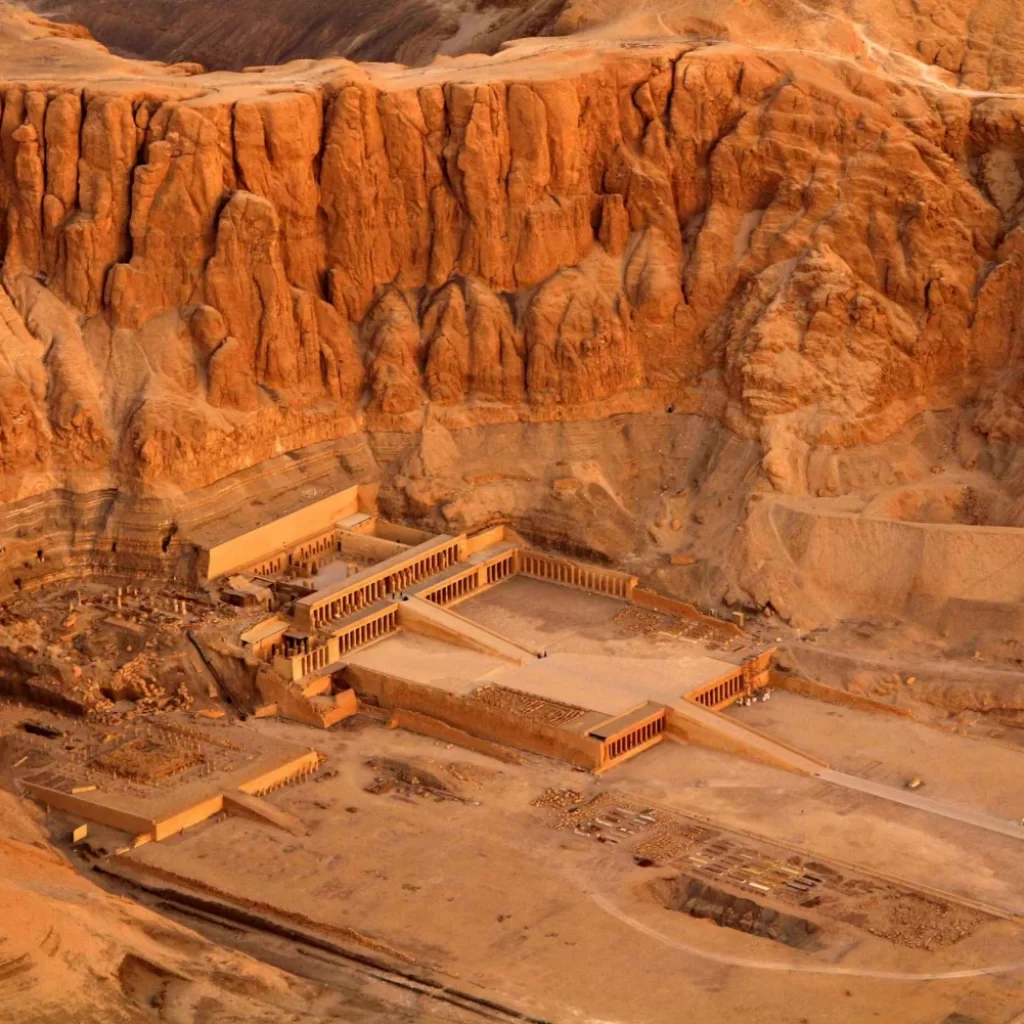
Expanding upon Hatshepsut’s audacious proclamation as pharaoh, this chapter delves into the reactions evoked both domestically and internationally. It explores the religious and political strategies she deployed to validate her authority and counter dissent, alongside the obstacles posed by conservative factions and rivalries within the court.
By contextualizing her coronation within the framework of ancient Egyptian norms, the chapter accentuates the groundbreaking nature of her reign as the first female pharaoh of Egypt.
Hatshepsut’s ascendancy to the throne reverberated throughout Egypt and beyond, eliciting a spectrum of responses from her contemporaries. Her utilization of religious rhetoric, casting herself as the divine offspring of Amun-Ra, served as a potent tool to justify her rule in the eyes of the populace.
Simultaneously, she navigated the intricacies of political maneuvering, forging alliances and neutralizing opposition to consolidate her position of power.
However, within the labyrinthine corridors of the royal court, challenges loomed large. Traditionalists and rival factions, wary of a female ruler, sought to undermine Hatshepsut’s legitimacy and assert their own influence. Yet, through a combination of strategic alliances and assertive leadership, she weathered these storms, emerging as a formidable and unyielding sovereign.
The significance of Hatshepsut’s coronation reverberated far beyond the confines of ancient Egypt. Her unprecedented rise to power challenged entrenched notions of gender and authority, reshaping perceptions of leadership in the ancient world. As the first female pharaoh, Hatshepsut shattered barriers and blazed a trail for future generations of women in positions of power.
In tracing the contours of Hatshepsut’s coronation, this chapter illuminates the seismic impact of her reign on ancient Egyptian society. By navigating the complexities of religious legitimacy and political intrigue, Hatshepsut forged a path that transcended gender norms and reshaped the course of history. Her coronation stands as a testament to her audacity, resilience, and enduring legacy as one of Egypt’s most iconic rulers.
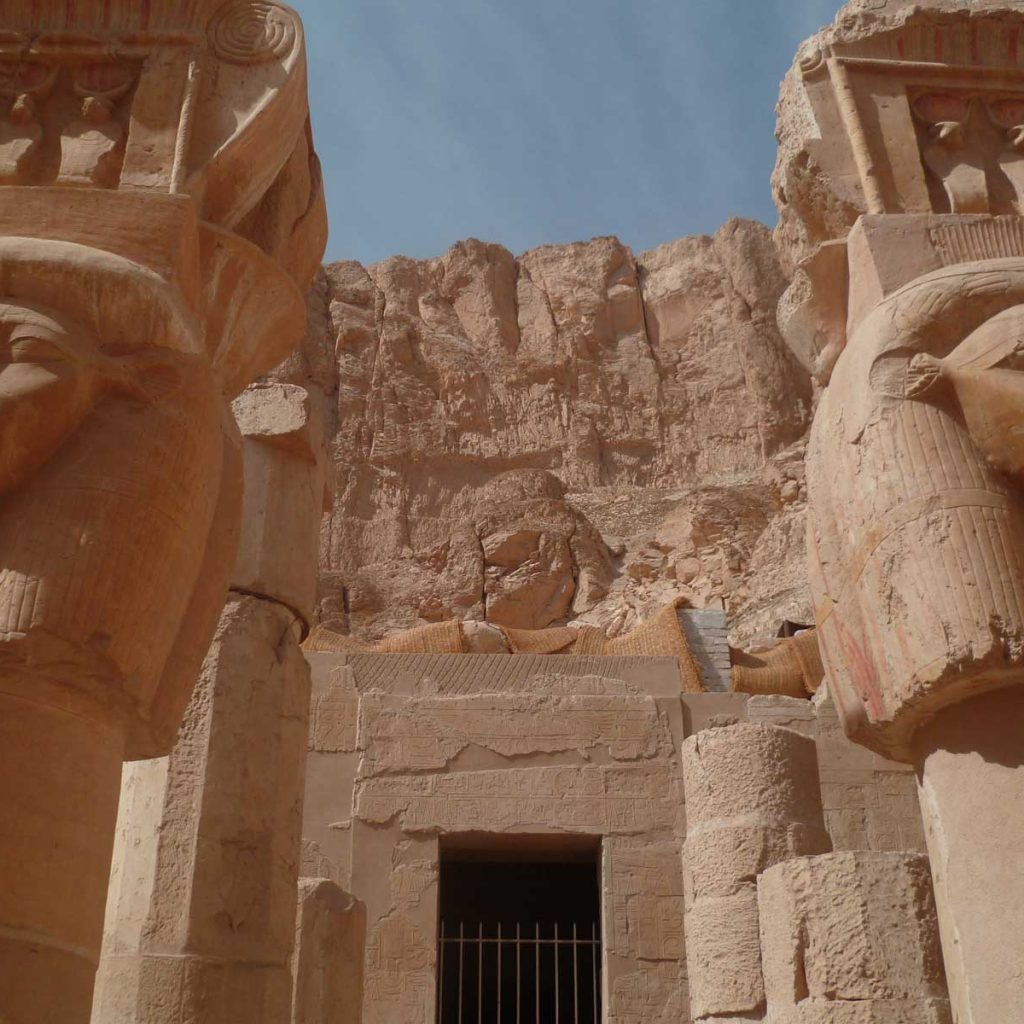
Within this segment, we can illuminate the core policies, ventures, and triumphs characterizing Hatshepsut’s rule, spotlighting her endeavors to foster stability, affluence, and a cultural renaissance. By underscoring her patronage of the arts, facilitation of trade routes, and cultivation of diplomatic ties with foreign nations, we can underscore the profound impact she had on ushering in Egypt’s Golden Age. Specific initiatives, such as the erection of her mortuary sanctuary at Deir el-Bahari or her military exploits in Nubia, serve as exemplars of her far-reaching influence as a ruler.
Hatshepsut’s reign was distinguished by a multifaceted approach aimed at enhancing Egypt’s prosperity and prestige. Through her unwavering support for artistic endeavors, she fostered a flourishing cultural milieu, commissioning monumental architectural marvels and intricate works of art that celebrated Egypt’s grandeur and divine heritage. This patronage not only embellished the landscape but also reinforced the kingdom’s cultural identity, leaving an indelible mark on Egypt’s artistic legacy.
Moreover, Hatshepsut’s astute navigation of trade networks bolstered Egypt’s economic fortunes, facilitating the exchange of goods and ideas across vast distances. By leveraging Egypt’s strategic position as a nexus of trade routes, she enriched the kingdom’s coffers and solidified its status as a dominant economic power in the region. This economic prosperity, in turn, fueled advancements in technology, infrastructure, and the standard of living for her subjects.
In the realm of diplomacy, Hatshepsut’s outreach to foreign powers fostered amicable relations and strategic alliances that secured Egypt’s borders and expanded its sphere of influence. Through diplomatic overtures and matrimonial alliances, she forged bonds with neighboring kingdoms and distant lands, cultivating a climate of peace and cooperation that endured throughout her reign.
Furthermore, Hatshepsut’s ambitious architectural projects stand as enduring testaments to her vision and ambition as a ruler. The construction of her mortuary temple at Deir el-Bahari, with its imposing terraced design and exquisite reliefs, exemplifies her commitment to honoring Egypt’s religious traditions and commemorating her own legacy for posterity. Additionally, her military campaigns in Nubia underscore her prowess as a strategist and defender of Egypt’s territorial integrity, extending her influence into the southern reaches of the kingdom.
In sum, Hatshepsut’s reign represents a golden era in ancient Egyptian history, characterized by prosperity, innovation, and cultural vibrancy. Through her enlightened policies and ambitious initiatives, she transformed Egypt into a beacon of civilization and secured her legacy as one of its most illustrious rulers.
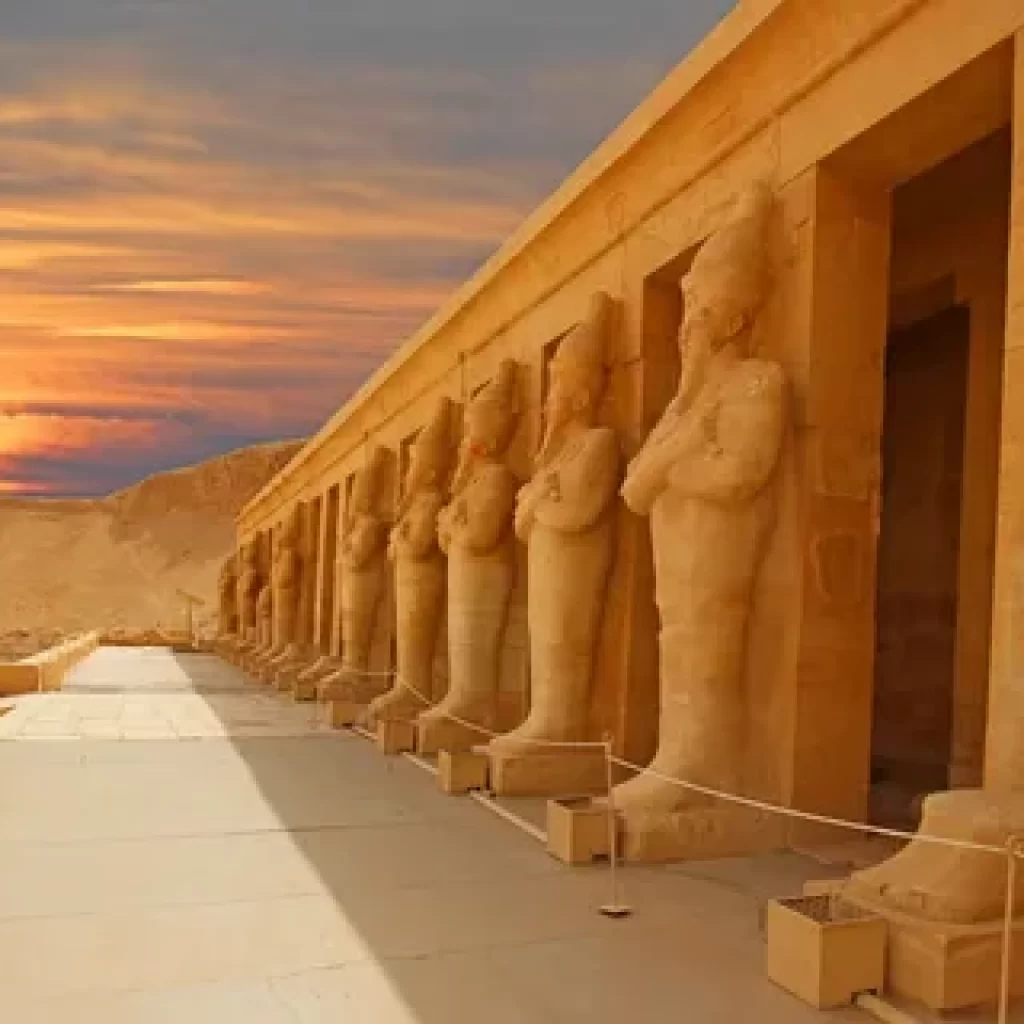
In this chapter, we delve deeper into Hatshepsut’s architectural pursuits, offering intricate examinations of the construction methods, symbolism, and broader implications of her grand projects. By scrutinizing the engineering feats achieved during her reign, notably the erection of monumental structures like the obelisks of Karnak and the Temple of Hatshepsut at Deir el-Bahari, we underscore her enduring legacy as a visionary architect and advocate for the arts. Furthermore, we unravel the economic and political drivers behind her extensive building initiatives, shedding light on their pivotal role in enhancing Egypt’s global stature and influence.
Hatshepsut’s architectural endeavors stand as towering achievements, both literally and metaphorically, within the annals of ancient Egypt. The meticulous craftsmanship and innovative techniques employed in the construction of structures such as the obelisks of Karnak exemplify the zenith of Egyptian architectural prowess during her reign. These towering monuments, adorned with inscriptions glorifying the pharaoh’s divine lineage and celebrating Egypt’s cultural heritage, served as enduring symbols of power and prestige, asserting Egypt’s dominance on the world stage.
Similarly, the Temple of Hatshepsut at Deir el-Bahari stands as a testament to her vision and ambition as a builder. Its distinctive terraced design and intricate reliefs pay homage to Egypt’s religious traditions while immortalizing Hatshepsut’s reign for posterity. Through her patronage of such monumental projects, Hatshepsut not only left an indelible mark on the Egyptian landscape but also solidified her legacy as a patron of the arts and a champion of cultural revival.
Moreover, the economic and political motivations underlying Hatshepsut’s building program are equally noteworthy. Beyond their aesthetic and religious significance, her architectural projects served as potent tools for projecting Egypt’s power and influence to neighboring kingdoms and distant lands. The monumental scale and opulent embellishments of these structures sent a clear message of Egypt’s wealth, sophistication, and divine favor, enhancing its diplomatic standing and fostering alliances with foreign powers.
In essence, Hatshepsut’s architectural legacy transcends mere stone and mortar, embodying the pinnacle of ancient Egyptian artistry, engineering, and political ambition. Through her visionary building initiatives, she not only reshaped the physical landscape of Egypt but also left an enduring imprint on its cultural identity and historical legacy.

In this segment, we embark on a captivating exploration of Hatshepsut’s renowned voyage to the exotic land of Punt, drawing upon a tapestry of historical accounts, archaeological findings, and artistic depictions to vividly resurrect the sights, sounds, and sensations of this remarkable expedition. By immersing ourselves in the awe-inspiring landscapes, vibrant cultures, and precious commodities encountered by the Egyptian entourage, we evoke the spirit of adventure and wonder that permeated ancient trade routes. Moreover, we delve into the diplomatic ramifications of Hatshepsut’s overtures to Punt, shedding light on her adept navigation of international relations in the ancient world.
Hatshepsut’s expedition to Punt stands as a pinnacle of ancient Egyptian exploration, immortalized in temple reliefs, inscriptions, and written accounts from the era. The journey unfolds as a saga of discovery and fascination, as the Egyptian fleet navigates treacherous waters and unforgiving terrain to reach the fabled shores of Punt. Through the eyes of contemporary chroniclers and modern archaeologists, we are transported back in time, witnessing the splendor of Punt’s lush landscapes, bustling markets, and enigmatic inhabitants.
The encounter with the people of Punt offers a window into a world of exotic wonders, as the Egyptians marvel at the abundance of precious goods, including incense, gold, ebony, and exotic fauna, exchanged in bustling trade exchanges. The vibrant colors, intoxicating scents, and bustling sounds of the Puntite markets come alive, painting a portrait of a thriving civilization at the crossroads of ancient trade routes.
Beyond the allure of commerce, Hatshepsut’s expedition to Punt holds profound diplomatic significance, as she seeks to cultivate alliances and establish Egypt as a dominant player in the international arena. Through shrewd negotiation and cultural exchange, she fosters amicable relations with the rulers of Punt, securing access to coveted resources and forging enduring bonds of friendship between their respective kingdoms.
In essence, Hatshepsut’s voyage to Punt encapsulates the spirit of adventure, discovery, and diplomacy that characterized ancient Egyptian exploration. Through a synthesis of historical evidence and imaginative reconstruction, we embark on a journey of exploration and intrigue, unraveling the mysteries of a bygone era and uncovering the enduring legacy of one of Egypt’s most illustrious rulers.

In this final chapter, we embark on a reflective journey to unravel the enduring impact of Hatshepsut’s reign, both within the ancient Egyptian context and in the annals of modern scholarship. By scrutinizing the diverse ways in which her legacy has been preserved, challenged, and reinterpreted over the centuries, we gain insights into the intricate tapestry of her historical significance.
From the deliberate attempts of her successor, Thutmose III, to expunge her memory from the annals of history to the contemporary rediscovery and reevaluation of her accomplishments by scholars, we trace the evolution of reputation and influence across temporal and spatial boundaries. Ultimately, we affirm her rightful place as one of Egypt’s most remarkable and enduring figures, whose indomitable spirit and visionary leadership continue to captivate and inspire audiences worldwide.
Hatshepsut’s legacy, though initially obscured by the efforts of Thutmose III to erase her memory, has endured the test of time, emerging stronger and more resilient than ever. Through the painstaking efforts of modern archaeologists, historians, and Egyptologists, her remarkable achievements have been unearthed, pieced together, and brought to light once more. No longer relegated to the shadows of history, Hatshepsut’s reign now shines brightly as a beacon of female empowerment and leadership in the ancient world.
Moreover,Hatshepsut’s story serves as a poignant reminder of the complexities of power, gender, and memory. Her reign challenges traditional narratives of ancient Egyptian history, forcing us to reexamine preconceived notions and biases. In her rediscovery, we find not only a celebration of her individual accomplishments but also a broader reevaluation of women’s roles and contributions in antiquity.
In conclusion, enduring legacy transcends the confines of time and space, resonating across millennia to inspire and empower future generations. As we continue to unravel the mysteries of her reign and reinterpret her achievements, we pay homage to her indelible mark on history and reaffirm her status as one of Egypt’s most remarkable and enduring figures.
Through her story, we glimpse the timeless power of ambition, resilience, and visionary leadership, echoing through the corridors of history to inspire greatness in all who dare to dream.
The personality traits and characteristics that defined Hatshepsut as a queen and pharaoh:
- Ambition: Her reign was marked by her ambitious aspirations to leave a lasting legacy and solidify her place in history. Her bold move to declare herself pharaoh despite societal norms demonstrates her unyielding ambition and determination to seize power and wield it effectively.
- Intelligence and Cunning: Throughout her life, demonstrated keen intelligence and political acumen. She navigated the treacherous waters of the Egyptian court with strategic finesse, earning the respect and admiration of her contemporaries through her shrewd decision-making and diplomatic prowess.
- Charisma and Charm: As a leader, possessed a magnetic personality and charismatic presence that endeared her to her subjects. Her ability to inspire loyalty and devotion among her followers played a crucial role in consolidating her power and maintaining stability throughout her reign.
- Piety and Devotion: Hatshepsut was deeply religious and devoted to the gods of ancient Egypt, particularly Amun-Ra. She portrayed herself as the divine offspring of Amun-Ra, emphasizing her divine right to rule and seeking the gods’ favor through lavish temple construction and religious ceremonies.
- Innovation and Vision: was a visionary leader who embraced innovation and pushed the boundaries of tradition. Her ambitious building projects, diplomatic initiatives, and commercial ventures reflected her forward-thinking approach to governance and her desire to position Egypt as a dominant force in the ancient world.
- Strategic Patience: Despite her ambitious goals, also demonstrated strategic patience and calculated risk-taking in her pursuit of power and influence. She bided her time, waiting for the opportune moment to assert her authority and carefully navigating the complexities of Egyptian politics to secure her position as pharaoh.
- Resilience and determination: she faced numerous challenges and obstacles throughout her reign, from internal power struggles to external threats. However, she remained resilient and determined in the face of adversity, refusing to back down or compromise her principles in the pursuit of her goals.
- Legacy Consciousness: Throughout her reign, she was acutely aware of the importance of legacy and sought to immortalize her achievements through monumental building projects and commemorative inscriptions. Her obsession with preserving her memory for future generations underscores her deep-seated desire for immortality and eternal fame.
Integrating these distinctive personality traits and attributes into Hatshepsut’s life story enriches the tapestry of her reign, presenting a multifaceted portrait of this extraordinary queen and pharaoh.
From her unwavering ambition and sharp intellect to her magnetic charisma and visionary foresight, Hatshepsut’s character wielded profound influence, shaping the trajectory of ancient Egyptian history and bequeathing a legacy that resonates through the ages.
Hatshepsut’s unparalleled ambition propelled her beyond the confines of convention, driving her to defy societal norms and ascend to the throne as Egypt’s first female pharaoh. Coupled with her keen intellect, she navigated the intricate webs of palace intrigue with finesse, earning the respect and admiration of her contemporaries while solidifying her authority as a formidable ruler.
Furthermore, Hatshepsut’s magnetic charisma and ability to inspire loyalty endeared her to her subjects, fostering a sense of unity and purpose throughout her kingdom. Her visionary outlook and innovative spirit spurred transformative advancements in diplomacy, architecture, and trade, catapulting Egypt to new heights of prosperity and cultural flourishing.
As we delve into the depths of Hatshepsut’s personality, we uncover the essence of a leader whose indomitable spirit continues to captivate and inspire. Her legacy endures as a testament to the enduring power of ambition, intellect, and visionary leadership, serving as a beacon of empowerment for generations to come.
In painting this nuanced portrait of Hatshepsut, we honor her remarkable contributions to ancient Egyptian history and celebrate the timeless resonance of her extraordinary character.

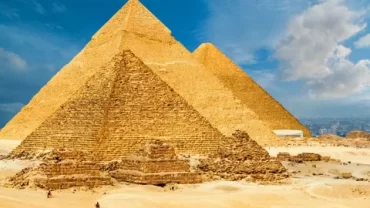



Comment (0)